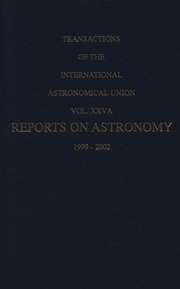No CrossRef data available.
Article contents
Proceedings of the Joint Discussion: Radar Determinations of Planetary Motions
Published online by Cambridge University Press: 16 November 2021
Abstract
Radar echoes have already been detected from Venus, Mercury, Mars, and Jupiter. Time delay measurements of high precision between Earth and Venus, as well as between Earth and Mercury, have disclosed significant deviations from the published ephemerides of these planets. Although new simultaneous solutions for the A.U., the relevant planetary masses, radii, and orbital elements have not yet been carried out, preliminary analysis indicates that the light-second equivalent of the A.U. is 499.0050 ± 0.0004 and that the corresponding kilometer equivalent is about 149 598 000 ± 100 (using c = 299 792.5 km/sec). The same analysis shows that, with respect to Earth, both Venus and Mercury seem to be ahead in their orbits relative to predictions. The radius of Venus appears to be about 6100 ± 50 km, in agreement with the most accurate optical determination. Doppler spread measurements show Venus to have a retrograde rotation with a period of about 247 ± 5 days. The celestial latitude of its axis is about – 85 ± 2 degrees.
- Type
- Part 4 Joint Discussions
- Information
- Copyright
- Copyright © Academic Press 1966
Footnotes
Operated with support from the U.S. Air Force.


